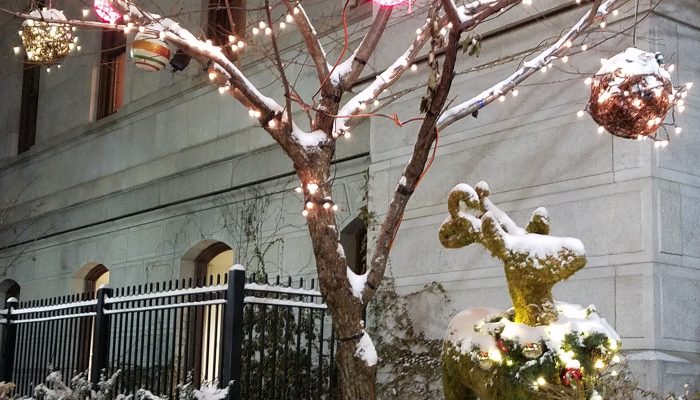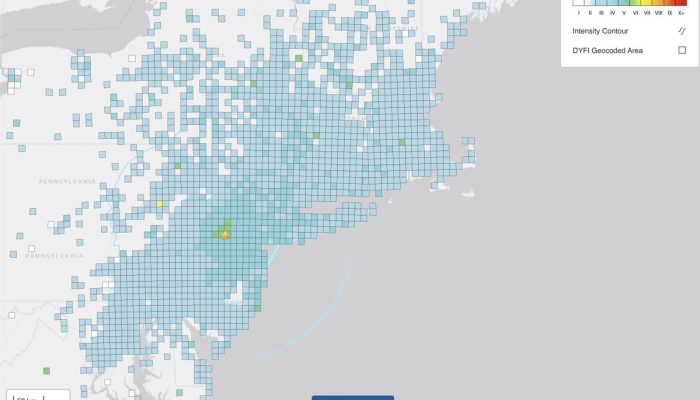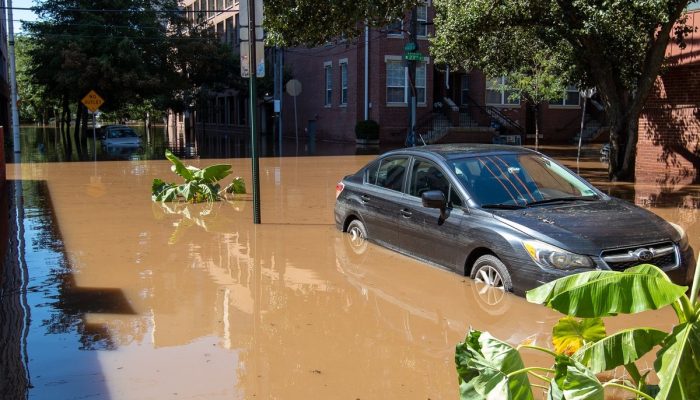Wintery weather can change our everyday perspective of city streets and sidewalks with just a coating of snow, sometimes making the holidays more memorable.
Wintery weather is also a cause for an increase in hazards, from slick driving conditions, power outages, increased fire and carbon monoxide danger, and freezing cold temperatures that can prove harmful to our health.
To help you plan for the season, we’ve gathered some common terms and actions you may see and hear.
Advisory
- An advisory is issued by the National Weather Service for less serious weather conditions. Specific advisories will alert you to hazards that may have a significant impact on drivers, outdoor activities, work, or public events.
Blizzards
- Dangerous winter storms that combine blowing snow and wind resulting in very low visibilities. Heavy snowfall and severe cold often go hand-in-hand with blizzards (although they are not required to declare one).
- A blizzard warning is issued by the National Weather Service Mount Holly (NWS) when sustained or gusty winds of 35mph or more combine with falling or blowing snow creating visibilities at or below one-quarter mile for at least 3 hours duration.
Code Blue
- Issued by the city when cold weather becomes a danger to individuals who are homeless and are without shelter. Philadelphia’s Office of Homeless Services consults with the City’s Department of Behavioral Health to issue a Code Blue to help those experiencing homelessness get indoors during extremely cold weather conditions. If you see a person who is homeless and in need, please call Homeless Outreach at 215-232-1984.
Communications
- Staying connected to reliable, first-hand info is critical. When the NWS issues certain types of watches and warnings, or if the City of Philadelphia declares a snow emergency and has other emergency information to pass along, text or email alerts will be sent free to ReadyPhiladelphia subscribers.
Freezing Rain
- Happens when snowflakes drop into a warmer layer of air and melt completely. These liquid-water drops then fall through another thin layer of freezing air just above the surface and don’t have enough time to refreeze before reaching the ground. They then refreeze upon contact with anything that that is at or below 0 degrees C, creating a glaze of ice on the ground, trees, power lines, or other objects. A significant accumulation of freezing rain lasting several hours or more is called an ice storm.
Health
- Prolonged exposure to the cold can result in serious health problems, most common being hypothermia and frostbite according to the Philadelphia Department of Health.
- Hypothermia happens when cold temperatures can cause your body to lose heat faster than it can be produced, which can cause hypothermia.
- When exposed to cold temperatures, your body begins to lose heat faster than it can be produced.
- Low body temperature may make you unable to think clearly or move well.
- You may not know you have hypothermia.
- If your temperature is below 95°, get medical attention immediately. This is an emergency.
- Frostbite is when there is an injury to the body caused by freezing.
- Frostbite causes a loss of feeling and color in the nose, ears, cheeks, chin, fingers, or toes.
- Wind chill and wind speed affect the actual air temperature and perceived temperature as well as the amount of time until frostbite occurs. The higher the wind speed and lower the temperature, the quicker the frostbite can set in. Anywhere from 5 to 30 minutes according to the CDC.
- Heart attack and dehydration can occur while performing strenuous activity outdoors, like shoveling. Avoid overexerting yourself. Cold weather puts an added strain on the heart. Take frequent rest breaks and drink plenty of fluids to avoid dehydration. Snow shoveling is to blame for 10,000 injuries every year according to the CDC. This also includes muscle and bone injuries as well as heart attacks.
Ice storm
- A storm which results in the accumulation of at least .25” of ice on exposed surfaces. These storms create hazardous driving and walking conditions. Tree branches and powerlines can easily snap under the weight of the ice.
- An Ice Storm Warning is issued by the NWS when significant ice is expected to accumulate on trees, powerlines, and roads. An ice storm is a very dangerous storm that disrupts traffic and knocks down powerlines, sometimes for prolonged periods.
Pets
- During a Code Blue, it is against City ordinance to leave pets outside in extreme cold and owners can be fined up to $500. Call the Animal Care & Control Team of Philadelphia (ACCT Philly) hotline at 267-385-3800 if you see a dog or other pet outside during extreme cold.
Plow routes
- In order to provide effective service during winter storms, Philadelphia’s streets are divided into primary, secondary, and tertiary route systems.
- The primary route system encompasses 665 miles, including 110 miles of Snow Emergency Routes.
- The secondary route system includes another 700 miles of streets (both systems exclude the roadway maintained by the Parks and Recreation).
- The rest of the city’s streets fall into the tertiary street system, covering approximately 1,125 miles of streets, 25 miles of which are private streets.
Power outages
- Winter storms can cause outages when they bring down trees or power lines due to high winds and snow or ice accumulations.
- Philadelphia’s power utility company PECO has ways to help before, during, and after a storm, including; preventing outages, storm readiness, storm restoration process, reporting outages online, and tracking current outages.
- PECO also wants you to know you can report an outage using their app or on mobile via text message to 697326 (MYPECO).
Sleet
- This occurs when snowflakes only partially melt when they fall through a layer of warm air. Slushy drops then refreeze as they next fall through a deep layer of freezing air and eventually reach the ground as frozen raindrops that bounce on impact. Sleet causes hazardous conditions on roads and sidewalks.
Shoveling sidewalks
- Within six hours of the end of a snowfall or freezing rain, you must clear a path at least 36 inches wide on your sidewalk including curb cuts. Do not shovel or sweep the snow into the street. The penalty for violating this regulation can range from $50 up to $300 for each violation.
- Don’t forget to shovel around fire hydrants, including a path from the street, in case the Philadelphia Fire Department needs to find and access the hydrant.
Snow emergency
- The City’s Managing Director will announce a Snow Emergency. For residents, this means all parked cars must be moved off Snow Emergency routes for plowing. When moving your car, park as far from the corner of the street as possible; vehicles parked too close to the corner get in the way of snowplows trying to turn corners.
- Snow Emergency information and a map of Snow Emergency routes can be found at the Philadelphia Streets Department. Cars left on Snow Emergency routes will be moved to other parking spots to assist in snow plowing operations. If your car is moved, call 215-686-SNOW to find it.
Snow squalls
- Brief but intense snow showers accompanied by strong, gusty winds. Squalls cause visibility to be greatly reduced for pedestrians or drivers.
Tree emergency
- Philadelphia Parks and Recreation has arborists on call to respond to tree emergencies, and they will come out to remove the hazard and any part of the tree that is an immediate risk to public safety.
- For non-emergency tree requests, please submit a request through Philly 311.
- If a tree has fallen on electrical wires, please call PECO’s emergency line: 1-800-841-4141. Do not approach.
Watch
- Issued by NWS when the risk of hazardous weather or hydrologic event has increased significantly, but its occurrence, location, and timing is still uncertain. It provides lead time to prepare for the impact of the weather event.
Warning
- A warning is issued by NWS when hazardous winter weather is imminent or has already begun. It is issued for conditions that pose a threat to life and property.
Wind Chill
- The combination of wind and low temperatures in winter can be deadly. The wind chill index helps you determine when dangerous conditions develop that could lead to frostbite or hypothermia. It takes into account heat loss from the human body to its surroundings during cold and windy weather. Wind chill values near minus 25 degrees mean that frostbite is possible within 15 minutes.
- A Wind Chill Advisory is issued when wind chill temps are expected to be a significant inconvenience to life with prolonged exposure, and, if caution is not exercised, could lead to hazardous health risks.
Winter Storm Warning
- Issued by NWS when hazardous winter weather in the form of heavy snow, heavy freezing rain, heavy sleet or any combination of heavy winter precipitation, is imminent or occurring. Winter storm warnings are usually issued 12 to 24 hours before the event is expected to begin.
Winter Weather Advisory
- Issued for accumulations of snow, freezing rain, freezing drizzle, and/or sleet which will cause significant inconvenience.




